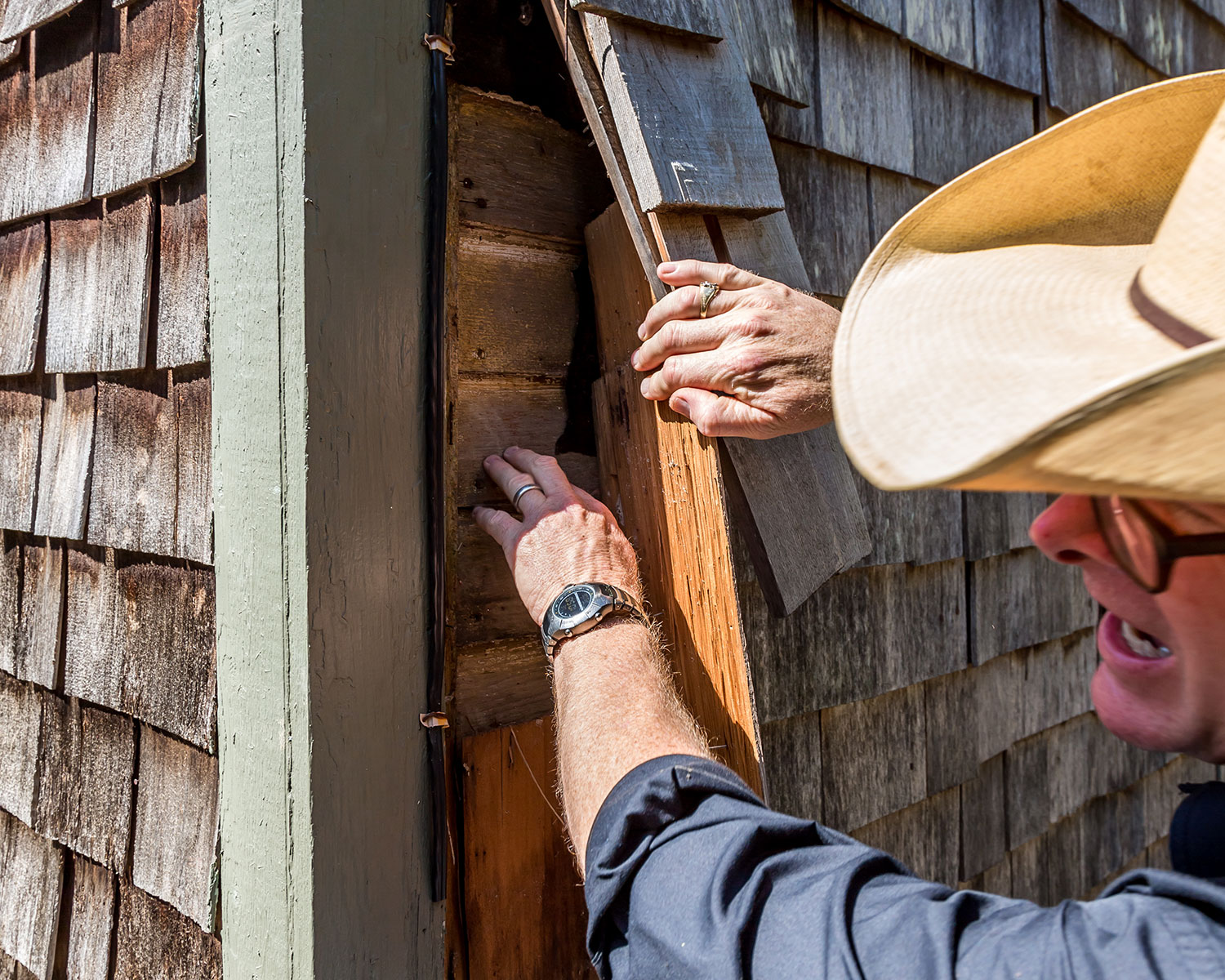Billy Lemons remembers exactly how he started in the moving business. His dad, Ray Lemons, worked in the oil fields, driving a winch truck until an injury sidelined him. A chance to start anew came in 1963 when Ray realized moving structures could be a lucrative profession. At 14 years old, son Billy skipped school to help his dad move a house. Lemons Company, House and Bridge Movers was born in the family hometown of Whitesboro, Texas.
One of the early jobs for the company was relocating a barn from Frisco to Van Alstyne. The company motto “Ray Lemons – You Call, We Haul” was emblazoned on the family truck which pulled a hay wagon hauling the two-story barn. A variety of buildings and bridges have traveled the roads behind the Lemons name. By his count, Billy has moved an average of 80 structures per year for decades. “We consider any house a mobile home,” he likes to say. Billy’s latest challenge was the Collinwood house in Plano, to be restored on a new site just a half mile northwest of where it was built in the early 1860s.

Clinton Shepard Haggard and his wife Nancy, known as Nannie Kate, were the owners of the house from 1862 until 1884 when it was passed down to their daughter Annie Bell Aldridge. She in turn bequeathed it to her daughter, Emma Kendrick. In the late 1930s, the house and land were sold out of the family. In 2009 the City of Plano purchased the property, then known as Collinwood Farm, for future park land, with plans to demolish the house. In a last-minute reprieve, Haggard family members, acting through Haggard Enterprises LLC, submitted a proposal to relocate the structure when the city offered to reimburse moving expenses.
The Haggards chose Billy to move the Collinwood house because of his extensive experience in moving historic structures. Billy confirmed that the biggest challenge in moving a large building is the preparation and loading. The actual move is easier but involves more liability. Traffic control, power lines, ground conditions and most of all weather contribute to the degree of difficulty. Moving at night is typical, and often buildings are sliced into pieces, with chimneys and fireplaces usually left behind. However, Collinwood house was moved in one piece, including the chimney, which was secured with boards, padding and straps.
The house being moved in stage one (above) and stage two (below) // videos courtesy City of Plano
Collinwood had some things in its way before it could be raised onto steel beams. A brick skirt had to go, and under it the hand-hewn beams were finally revealed. The remarkable condition of the solid oak supports was punctuated by multiple axe marks. Cut nails, spikes and wooden pegs all came into view. The late addition sunroom was knocked down showcasing the original footprint. New owner Clint Haggard couldn’t wait to peel off the exterior layer of shingles on each corner of the house. The cypress siding beneath was found to be in excellent condition: “Everything we could have hoped for,” Clint whooped.
Jackhammers and forklifts took turns piercing the concrete foundation and piers which had shored up the house. Folded newspapers found squeezed between a window frame for insulation were dated December 1, 1954. It became apparent that the house had been raised previously in order to pour substantial footings. Given the chance, the house would have proved itself a formidable opponent of an earthquake.
To raise the house high enough off the ground to move it, steel beams were pushed beneath it once excavation was adequate, and then air jacks were employed to raise it enough to add a second layer of beams. The jacks looked like flat rubber mats until inflated, when they slowly, but surely, elevated the structure.

Sometimes strange things are found in foundations when buildings are prepared for relocation. Billy laughed when he listed objects he has seen, such as buggy axles, barbed wire, bedsprings and all manner of auto parts. Recycling metal was key to reinforcing concrete, especially during war time when shortages were common and rebar unavailable.
The shortest distance Billy ever relocated a house was three feet, due to an error on a property line. Another memorable relocation was the home of former Dallas Cowboys running back Walt Garrison. His 8,300-square-foot house had five bedrooms and as many bathrooms and was moved to a site on Custer Road in McKinney. One of the largest structural moves which Billy witnessed was the Cape Hatteras lighthouse, relocated over half a mile from its perch on the Atlantic to protect it from erosion of the coastline. At 208 feet tall and 5,000 tons, it was no small feat.
As Collinwood was about to be uprooted, storms in the Gulf brought downpours. The rain postponed the first stage – a move across a pasture – so eight-wheeled dollies were moved into place while the ground dried out. Over and over, the hard-working crew rearranged the air jacks under the house which kept it level as it was raised. With additional layers in front of the wheels, traction improved enough to start the relocation.
In the late afternoon of September 11, the house rolled slowly across the prairie it had gazed upon for over a century and a half. Goodbye, Collinwood. Hello, Clint and Nannie Kate’s house. Thanks to the Lemons’ expertise, more generations of Haggards will be able to call this old house their own.
Photos of the relocation process // by Jennifer Shertzer unless noted

























Editor’s Note: This story was updated on Sept. 19 to include the video of the second stage of the moving process.






This was a cool page. Thanks very informative. The digital pictures and content were nice. As a person who just got siding from conservation construction of Dallas I know just how important getting things right is.